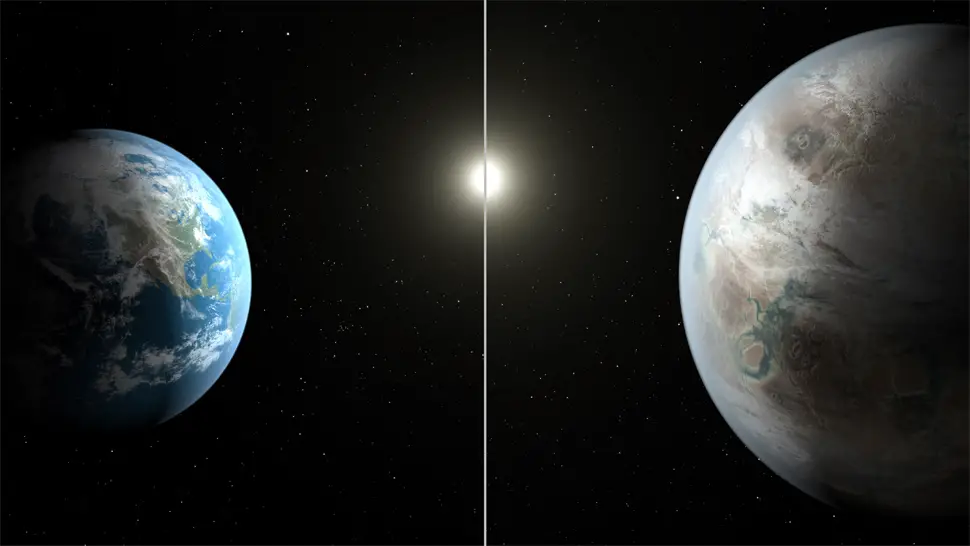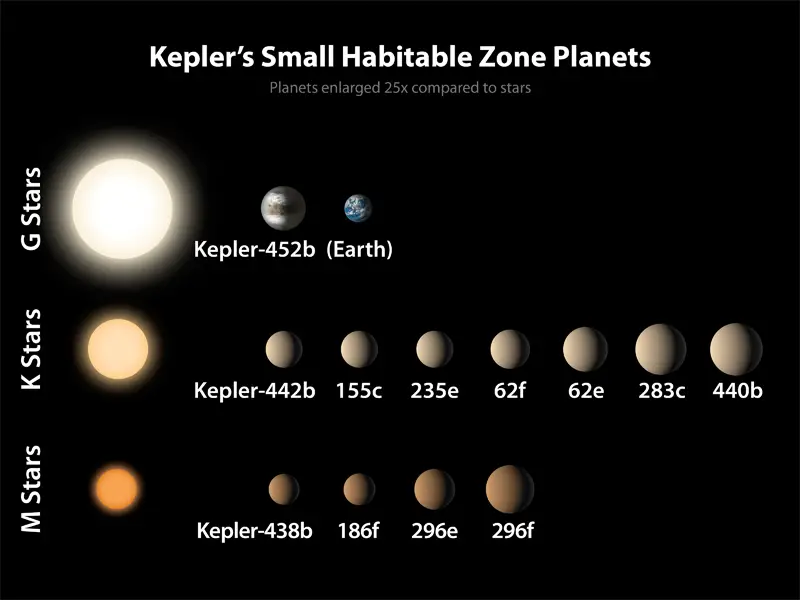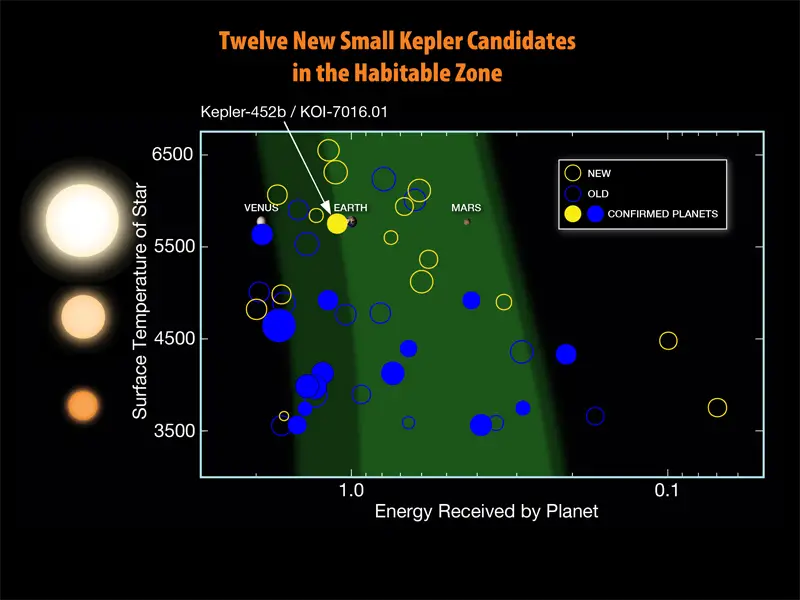
23rd July 2015 NASA finds the most Earth-like planet yet NASA has announced the discovery of Kepler-452b, an exoplanet that is near-Earth-size and orbiting the habitable zone of a Sun-like star.
NASA's Kepler mission has confirmed the first near-Earth-size planet in the “habitable zone” around a sun-like star. This discovery and the introduction of 11 other new small habitable zone candidate planets mark another milestone on the journey to finding “Earth 2.0.” The newly discovered Kepler-452b is the smallest planet to date found inside the habitable zone of a G-type star, like our sun. Today's confirmation of Kepler-452b brings the total number of confirmed exoplanets to 1,030.
“On the 20th anniversary year of the discovery that proved other suns host planets, the Kepler exoplanet explorer has discovered a planet and star which most closely resemble the Earth and our Sun,” said John Grunsfeld, associate administrator of NASA’s Science Mission Directorate at the agency’s headquarters in Washington. “This exciting result brings us one step closer to finding an Earth 2.0.” Kepler-452b is 60 percent larger in diameter than Earth and is considered a super-Earth-size planet. While its mass and composition are not yet determined, previous research suggests that planets of this size have a good chance of being rocky. While Kepler-452b is somewhat larger than Earth, its orbit is remarkably similar, being only 5 percent longer at 385 days. The planet is just 5 percent farther from its parent star than Earth is from our Sun. The star Kepler-452 has the same temperature as our own sun, is around 20 percent brighter and with a diameter 10 percent larger. Its age is estimated at 6 billion years, which is 1.5 billion years older than our sun. “We can think of Kepler-452b as an older, bigger cousin to Earth, providing an opportunity to understand and reflect upon Earth’s evolving environment,” said Jon Jenkins, data analysis lead at NASA's Ames Research Centre, California. “It’s awe-inspiring to consider that this planet has spent 6 billion years in the habitable zone of its star; longer than Earth. That’s substantial opportunity for life to arise, should all the necessary ingredients and conditions for life exist on this planet.”
In addition to confirming Kepler-452b, the team has increased the number of new exoplanet candidates by 521 from their analysis of observations conducted from May 2009 to May 2013, raising the number of planet candidates detected by the Kepler mission to 4,696. Candidates require follow-up observations and analysis to verify they are actual planets. Twelve of the new planet candidates have diameters between one to two times that of Earth, and orbit in their star's habitable zone. Of these, nine orbit stars that are similar to our sun in size and temperature.
“We've been able to fully automate our process of identifying planet candidates, which means we can finally assess every transit signal in the entire Kepler dataset quickly and uniformly,” said Jeff Coughlin, Kepler scientist at the SETI Institute in Mountain View, California, who led the analysis of a new candidate catalogue. “This gives astronomers a statistically sound population of planet candidates to accurately determine the number of small, possibly rocky planets like Earth in our Milky Way galaxy.” The Kepler-452 system is located 1,400 light-years away in the constellation Cygnus. At the speed of New Horizons, it would take about 25.8 million years to reach there. A research paper reporting NASA's findings has been accepted for publication in The Astronomical Journal.
Comments »
|










